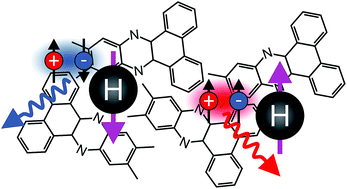OLEDs as models for bird magnetoception: detecting electron spin resonance in geomagnetic fields
Abstract
Certain species of living creatures are known to orientate themselves in the geomagnetic field. Given the small magnitude of approximately 48 μT, the underlying quantum mechanical phenomena are expected to exhibit coherence times in the microsecond regime. In this contribution, we show the sensitivity of organic light-emitting diodes (OLEDs) to magnetic fields far below Earth’s magnetic field, suggesting that coherence times of the spins of charge-carrier pairs in these devices can be similarly long. By electron paramagnetic resonance (EPR) experiments, a lower bound for the coherence time can be assessed directly. Moreover, this technique offers the possibility to determine the distribution of hyperfine fields within the organic semiconductor layer. We extend this technique to a material system exhibiting both fluorescence and phosphorescence, demonstrating stable anticorrelation between optically detected magnetic resonance (ODMR) spectra in the singlet (fluorescence) and triplet (phosphorescence) channels. The experiments demonstrate the extreme sensitivity of OLEDs to both static as well as dynamic magnetic fields and suggest that coherent spin precession processes of coulombically bound electron-spin pairs may play a crucial role in the magnetoreceptive ability of living creatures.

- This article is part of the themed collection: Quantum effects in complex systems


 Please wait while we load your content...
Please wait while we load your content...